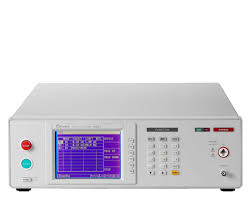Analyzers Check on Medical Safety
August 02, 2021
 |
Health and safety are invaluable resources that can be monitored and protected with the right measurement tools, such as electrical safety analyzers. This versatile test equipment is often associated with ensuring that medical electronic devices are safe to handle, but they can also be used to check the safety levels of electronic products for many different areas, including for mobile communications and the growing number of electronic devices for automotive applications.
What determines if an electronic device or even an electronic equipment is safe to handle? The flesh on a human hand is not an ideal conductor, with high resistance to the flow of improperly grounded current, but the blood and internal tissues and muscle layers underneath have low electrical resistance and can serve as unwanted conductors to excess charge within an electronic product or equipment that is not properly grounded. Measurements performed by electrical safety analyzers can be part of a rigorous safety monitoring routine for electronic products.
Electrical safety analyzers help users check for leakage currents in a device under test (DUT). Above and beyond that can be done via visual inspections, such as looking for loose interconnections on a printed-circuit board (PCB), electrical safety analyzers can perform open-short checks (OSCs) on a circuit and measure the resistance of ground wires from point to point to ensure that a circuit provides sufficient low-resistance pathways to the ground plane. With their own sufficient grounding and shielding, an electrical safety analyzer will have enough sensitivity and measurement resolution to detect low leakage currents in an electronic circuit which may become health hazards at an appropriate voltage. When those leakage currents become excessive and at too high a voltage potential, they can become what is known as the hazard current of an electrical product that has failed because of an over-voltage condition, with the current seeking ground through any available pathway, including a user. Equipment equipped with a ground fault interruption (GFI) function can protect a user from unexpected discharges.
Different types of shocks can result from a circuit with improper grounding and too much leakage current at too high a voltage. A shock that occurs outside the body because of an electronic device or equipment encountering a low-resistance pathway to a better ground plane is known as a macroshock. An electric shock that is applied directly to a body’s organs, tissues, and muscles because of the body meeting an over-charged device is known as a microshock. Leakage currents are the cause of both types of shocks and numerous worldwide measurement and safety standards have been established for electronic devices and equipment to limit the amount of current leakage in modern electronic products for medical and other applications.
Tracking the Tests
Along with the capability to measure a wide range of leakage currents, an electrical safety analyzer intended for checking a certain application circuit should have the appropriate AC and DC voltage ranges to investigate the effects of a circuit’s leakage currents at all possible operating voltage conditions. Wide AC and DC high potentiometer (hi-pot) voltage ranges provide some of the measurement functionality needed to check the electrical safety of a DUT. Those voltage should exceed the operating safety limits of a DUT, making it possible to destroy a DUT during testing with an over-voltage.
The wide hi-pot voltage ranges also enable measurements of a DUT’s insulation resistance, ground continuity, and electrical isolation (such as between an equipment’s chassis and contacts or leads). When testing the DC limits of capacitive circuits, fast charging capabilities will be needed, especially for production-line testing, because of the need to charge and discharge the capacitors. Any number of measurements to determine the safe operating limits of a DUT should be performed manually or automatically without risk to the equipment’s operator.
Eying Examples
Some of the most versatile electrical safety analyzers are some of the most useful, since these are equipment that must match a variety of different electrical test loads, digital control interfaces for automatic-test-equipment (ATE) systems, and even meet many different international and U. S. electrical safety standards. Rack-mount equipment such as the Associated Research OMNIA ll 8257 is available with 15 and 20 A capabilities and several digital interfaces for ATE use, including Ethernet, GPIB, RS-232, and USB ports. This unit performs dielectric-withstanding tests at voltages of 0 to 5 kV AC and 0 to 6 kV DC with 1-V tuning resolution. It is rated at 5 kV for 50 mA AC and 6 kV for 20 mA DC. The unit itself is protected by a 10-A, 250-V AC slo-blo fuse which “guards” input power for the equipment from 115/230 VAC sources. To help those faced with high-volume production safety testing, the OMNIA II Series analyzers are equipped with a host of productivity-enhancing features, such as the capability to perform simultaneous hipot and ground-bond tests, reduced ramp-up time during DC hipot tests, and confirmation of DUT connections prior to testing.
Another versatile electrical safety analyzer, the Chroma 19032-P is also CE certified and combines hi-pot, insulation resistance, ground bond, and leakage current testing within a single compact unit. It also has several digital interfaces for ATE flexibility, including GPIB, RS-232, and USB interfaces. Its Twinport™ Technology trims production test time during production testing by performing simultaneous hi-pot and ground-bond testing. The analyzer constantly monitors safety conditions by performing OSC checks during testing and incorporates GFI circuitry to protect a user. The analyzer can control (via RS-232) one of Chroma’s AC sources as a power supply when increased input voltage stability is required during dynamic leakage current testing.
For DUTs requiring high withstanding voltages for testing, the Hipot Analyzer 19057, also from Chroma ATE, provides outputs to 12 kV DC and 10 mA. It provides many of the checks needed for electrical safety testing, including OSC, and performs insultation resistance tests from 0.1 MΩ to 50 GΩ at voltages from 0.1 to 5.0 kV DC. It includes a flashover detection function for current from 1 to 10 mA and a fast charge/discharge function for production-line electrical safety testing. The analyzer, equipped with the “CE Mark” of compliance, has several digital interfaces for ATE use, including USB and RS-232, and is available with GPIB as an option. Its GFI circuitry ensures safe operating conditions for users.
To simplify test connections when performing electrical safety testing, the 95X series of hipot testers from Vitrek Corp. work with the company’s model TL-UP2 test adaptor for fast and easy connections of high AC and DC voltages to DUTs with a power cord. Analyzers such as the Vitrek 955i, can operate with versions of the test adaptor for hipot/ground-continuity or hipot/ground-bond testing over wide voltage ranges: 50 V to 10 kV AC and 30 mA maximum current or 50 V to 11 kV DC and 30 mA maximum current for the model 955i hipot tester. Over this connection, the equipment can control as many as four 64-channel high-voltage scanners (256 test points) and can handle ground bond currents as high as 40 A. To protect operators, the equipment is also equipped with GFI functionality. At the same time, the tester provides the capability to measure leakage current as low as 100 pA to ensure that anyone using the DUT will also be safe.
These are just some examples of Electrical Safety Analyzers available to you. The right Safety Analyzer for your needs can be found by comparing the equipment’s capabilities to the limits of the occupied bandwidth measurements you need. For more information on these and to check out a variety of equipment from different manufacturers available for sale or rental, visit the Axiom Test Equipment (www.axiomtest.com) website.
Back to BLOG








